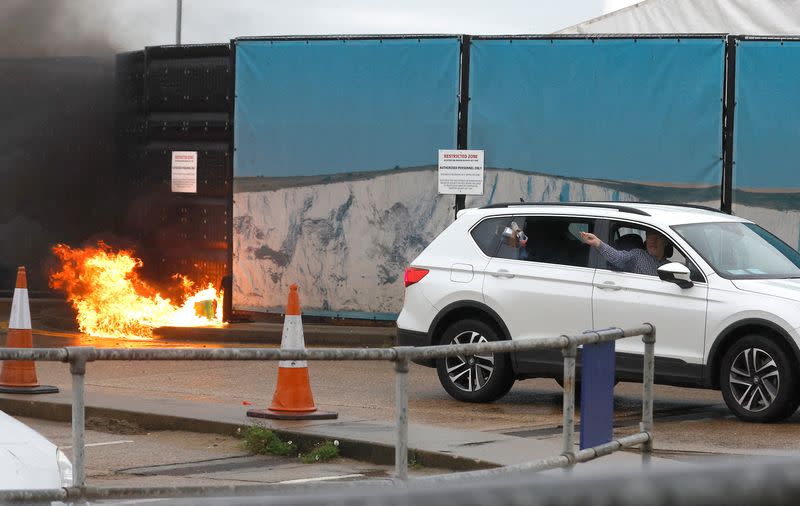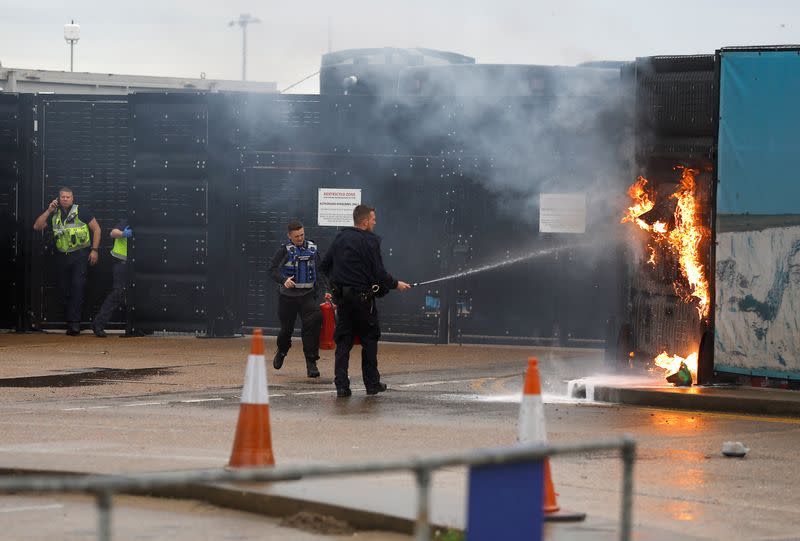A picture and its story: Fire-bombing of a seaside English migrant centre
DOVER, England (Reuters) - "I heard this bang and I thought it was a bird scarer," Reuters photographer Peter Nicholls recalls, describing the moment a man fire-bombed the gates of a centre for processing migrants in the English port of Dover and then took his own life.
It was a dreary day in the south coast town and Nicholls was taking pictures to illustrate a story on tension between Britain and France over who should handle thousands of migrants who make the dangerous trip over the English Channel each year.
Nicholls was driving away from the centre when he heard the bang. He turned his car around and saw the outer gates of the facility on fire and Border Force staff retreating as fireworks went off outside.
He saw a man in a checked shirt sliding plastic canisters of flammable liquid, attached to lit fireworks, along the ground towards the facility.
"He was running around with his arms in the air and shouting," said Nicholls, unsure at first whether a strange practical joke was underway.
Reuters could not confirm the identity of the attacker nor any motive.
Local police said in a statement that they had identified the individual and had found "two to three" incendiary devices thrown from outside the premises by a single suspect. Two minor injuries were reported.
The Dover facility is the first stop for many of those who arrive by boat from France, before they are sent to other accommodation while their claims to stay are reviewed.
Britain wants France to deter these journeys, while human rights campaigners say asylum seekers face inhumane conditions in British detention centres.
At least one of the devices failed to catch fire. In a final attempt, the attacker boarded a white SEAT sports utility vehicle and threw what appeared to be another improvised explosive device from the car window at the facility, which Nicholls photographed.
The man sped away, driving the wrong way down the road, Nicholls said. Military personnel appeared shortly thereafter to extinguish the fire.
Seconds later, Nicholls heard two more bangs and saw smoke coming from a nearby petrol station.
He drove around the corner and found the attacker there, dead in his car.
The man's head was visible, poking out of the opened rear window behind the driver's seat. One end of an orange strap had been tied around his neck and was pulled taut, the other anchored to a metal pole.
The police arrived on the scene at the same time and later covered the car and body with a tarpaulin. Hours later they confirmed the death.
"From calm, to chaos, to the completion with his death - it was less than five minutes," Nicholls said.
(Writing by Andy Bruce; Editing by Daniel Wallis)

 Yahoo News
Yahoo News 


